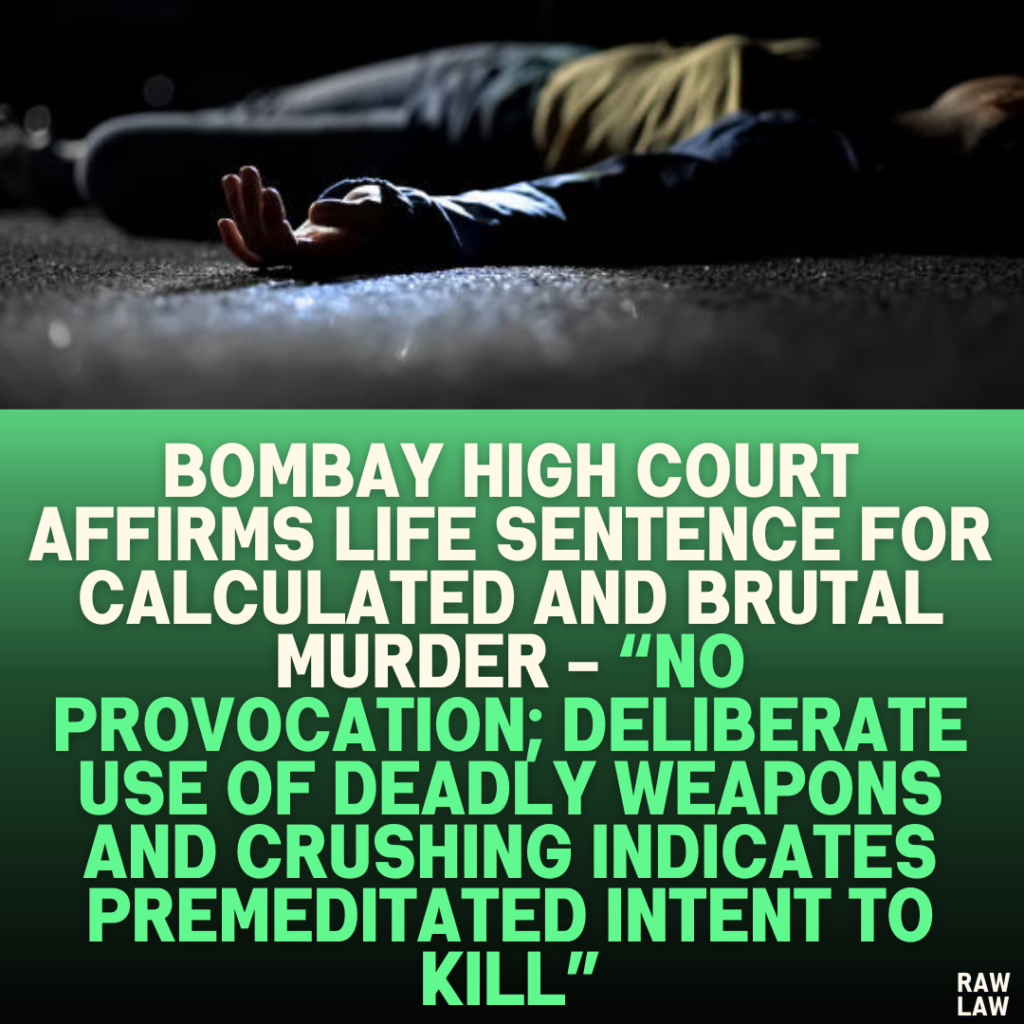Court’s Decision:
The Bombay High Court dismissed the appeal, upholding the life sentence for both accused under Section 302 read with Section 34 of the Indian Penal Code, determining the act to be a calculated murder rather than a response to sudden provocation. The court rejected the defense’s argument of provocation, emphasizing the accused’s deliberate use of deadly weapons and the brutal nature of the assault, including crushing the victim with a vehicle.
Facts:
The case involves the murder of Sumit Kamble, who died after being assaulted by the accused, Kamlesh and Shekhar, with knives and subsequently being run over by a garbage vehicle at a dumping yard in Nagpur. Both the accused and the deceased were employed as garbage vehicle drivers, and Sumit’s sister had recently married one of the accused, Kamlesh, leading to ongoing disputes. On the day of the incident, an argument ensued, leading to the accused repeatedly stabbing the deceased. When Sumit attempted to flee, Kamlesh drove the vehicle over him, resulting in fatal injuries.
Issues:
- Whether the accused acted under sudden provocation, potentially reducing the severity of the offense.
- Whether the murder was a premeditated act carried out with deadly intent.
Petitioner’s (Accused’s) Arguments:
The defense argued that the incident was a sudden act caused by provocation. They suggested that the deceased’s aggressive behavior and past tensions led to an impulsive response, thus falling under Exception 4 to Section 300 of the IPC. They further argued that since no weapons were recovered and inconsistencies existed in witness testimonies, reasonable doubt should benefit the accused. The defense also questioned the absence of specific crush injuries mentioned in the medical report.
Respondent’s (Prosecution’s) Arguments:
The prosecution contended that the act was deliberate and premeditated. They cited multiple stab wounds and the severe crushing injuries to argue that the accused acted with clear intent to kill. The prosecution also highlighted that the deceased was unarmed, refuting the defense’s claim of provocation. They presented medical evidence detailing severe head and body injuries consistent with both stabbing and the use of a heavy vehicle, supporting the murder charge.
Analysis of the Law:
The court examined Exception 1 of Section 300 IPC, which allows for a reduction in culpability if the act was committed under grave and sudden provocation. However, it emphasized that for the exception to apply, the provocation must lead to a loss of self-control, resulting in an unintended consequence. In this case, the repeated stabbing and deliberate crushing indicated a clear intent to cause death, disqualifying the defense of sudden provocation.
Precedent Analysis:
The court referenced State of Andhra Pradesh vs. Rayavarapu Punnayya, which distinguishes murder from culpable homicide. The court also reviewed similar cases where acts of premeditated violence, particularly when involving deadly weapons and excessive force, were ruled as murder under Section 302, IPC. The cited cases reinforced that calculated actions with fatal intent do not qualify for leniency under exceptions for provoked acts.
Court’s Reasoning:
The court found that the accused were equipped with deadly weapons and used them with deliberate intent, inflicting multiple stab wounds and subsequently crushing the deceased under a vehicle. The court held that these actions showed premeditation and a determined intent to kill. The witnesses’ testimonies and medical evidence provided a consistent account of the brutality involved. Given the calculated nature of the crime, the defense of provocation was deemed inapplicable.
Conclusion:
The court affirmed the life sentences for both accused, stating that the actions were consistent with murder as defined under Section 300, IPC, rather than a lesser offense under Exception 4. The appeal was dismissed, and the conviction and sentencing were upheld.
Implications:
This judgment emphasizes the legal distinction between murder and culpable homicide, particularly when intent is evident through deliberate and brutal actions. The case underscores the court’s approach to crimes of severe violence where premeditated actions are involved, reinforcing that claims of sudden provocation will not be easily accepted in cases displaying clear intent to kill.
